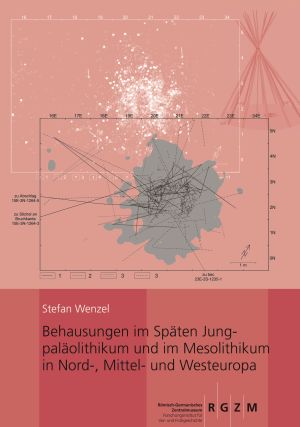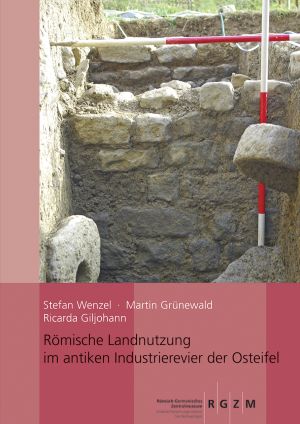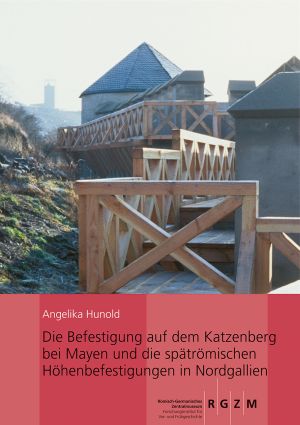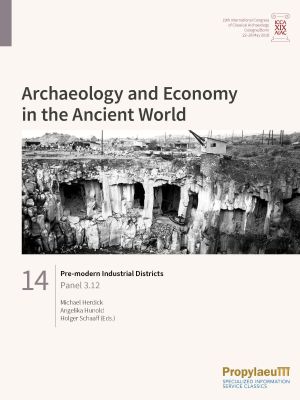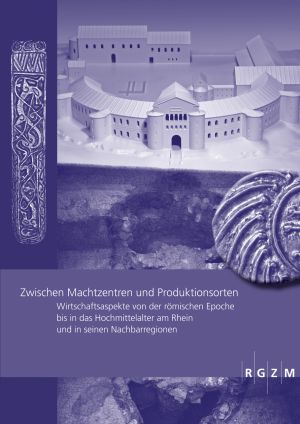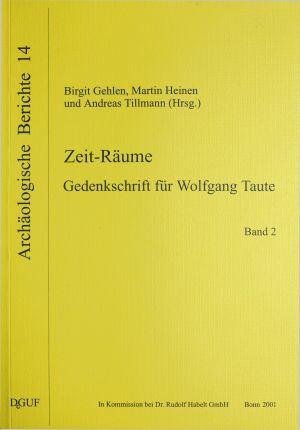Wenzel, Stefan
Behausungen im Späten Jungpaläolithikum und im Mesolithikum in Nord-, Mittel- und Westeuropa
Where hunter-gatherers camped between 15000-5000 BC in the steppes and forests of Europe, stone artefacts and hearthstones were usually left behind in large numbers. Only rarely, however, are dwellings directly verifiable on the basis of preserved construction elements.
In this book six accumulations of lithic artefacts are examined to see if there are indications that tent walls once surrounded them as an obstacle to a diffuse distribution of the stone debris to the outside: Orp Ost and Rekem 10 in Belgium, Cepoy in the Paris Basin, Geldrop 3-2 in the southern Netherlands, Berlin-Tegel IX, and Hartmannsdorf 26 in Brandenburg. In these settlement structures as well as in the dwellings and unroofed campsites of this period used for comparison, it is also possible to reconstruct work areas
Römische Landnutzung im antiken Industrierevier der Osteifel
From the beginning of the Roman Imperial period, the area between Mayen on the edge of the Eifel and Andernach on the Rhine experienced an enormous increase in its economic activity. In a short time, an industrial area developed there, from which wide areas in the Roman north-western provinces were supplied with high-quality basalt lava millstones, light tuff and later also heat-resistant ceramics. Quarries were newly established, land and water routes were expanded, existing outlets were extended and others were still to be developed. Setbacks in the 3rd and 4th centuries were followed by further booms.
How could the numerous workers and their families be fed, and what consequences did the success of the stone and energy-intensive pottery industries have for the environment? In order to clarify this, two Roman villas on the northern edge of the Mayen millstone quarries were investigated with geophysical measurements, excavations, geoarchaeological and botanical studies, and their entire surroundings were explored. The results are presented in this book. The inhabitants of the villa Mendig, »Im Winkel« were themselves involved in the production of millstones. In late antiquity, a surface drainage system there probably kept a transhipment point for millstones on the Segbach dry, while a fortified storage building ensured the supply of the quarrymen. Quarry owners resided in the villa Mendig, »Lungenkärchen«. It turned out to be an axial courtyard with an impressive water basin. Inspections led to the discovery of the burial ground belonging to »Lungenkärchen« with monuments made of Lorraine limestone as well as the discovery of a previously unknown vicus »Im Terl«.
Die Befestigung auf dem Katzenberg bei Mayen und die spätrömischen Höhenbefestigungen in Nordgallien
On the Katzenberg near Mayen, a military fortification, one of the largest of its kind, existed from about 300 AD until the middle of the 5th century to protect the economic centre of Mayen.
Based on the results obtained there, 143 other hill fortifications in northern Gaul are examined. Oriented along traffic routes, especially waterways, these fortifications by no means have the character of hidden refuges. Rather, they can also be classified as military installations that were integrated into an overarching defence concept. They ensured the continuity of civil and economic life in rural areas. Thus, hilltop fortifications are one of the elements of a deep military defence in Late Antiquity.
Pre-modern Industrial Districts: Panel 3.12
The ancient quarrying and mining district of the Eastern Eifel has been the subject of research by the Römisch-Germanisches Zentralmuseum (RGZM) in Mainz and Mayen since 1997. The products – primarily basalt lava millstones, tuffstone building material, and pottery – were extensively traded throughout much of Europe for many centuries.
An extensive research programme was launched to examine the wealth of evidence about the ancient stone industry in the region and its significance for the political establishment of Rome north of the Alps. The main subjects were the basalt and tuff stone industries as well as the Mayen vicus, the most important economic centre. Another subject is the pottery production, which is researched by material studies as well as by experimental archaeology. Other studies deal with the preconditions for the economic success, focussing on the infrastructure and the rural settlement conditions.
Being an industrial district of supraregional importance, the quarrying and mining district of the Eastern Eifel turned out an excellent case study for the investigation of pre-modern industrial districts in general, providing a model for the study of ancient industries: these need to be investigated with a long-term view and with a holistic approach, taking into account economic, social and settlement aspects.
Zwischen Machtzentren und Produktionsorten: Wirtschaftsaspekte von der römischen Epoche bis in das Hochmittelalter am Rhein und in seinen Nachbarregionen
On 12 November 2018, a cooperation agreement was signed in Ingelheim am Rhein between the Kaiserpfalz Research Centre based there and the Roman-Germanic Central Museum, Leibniz Research Institute for Archaeology. With this agreement, the close ties that have existed since the middle of the 19th century between the scientists in Mainz and the researchers of the Imperial Palace in Ingelheim were confirmed in writing. The future cooperation will focus particularly on European economic aspects and topics of supra-regional materials research. The first fruits of this cooperation were presented at interdisciplinary conferences on 12 and 13 November 2018 in Ingelheim and on 28 and 29 November 2019 in Mayen. These events also served as an intensive exchange with scientists from Germany and abroad. The results of both conferences are brought together in this conference volume. In 25 papers, the fundamentals of trade in the Rhineland and its neighbouring regions as well as the processes of the exchange of goods between centres of power, rural regions and production sites in the period from the Roman era to the High Middle Ages are examined from very different perspectives. Both for the large-scale development tendencies and the relationships between different economic regions as well as for the production sites and the marketing routes, the contributions offer trend-setting explanations, fundamental presentations and exceptional descriptions. They form the basis for future research in parts of Europe adjacent to the Rhineland, which is planned within the framework of the cooperation and will be reflected in further conferences.



